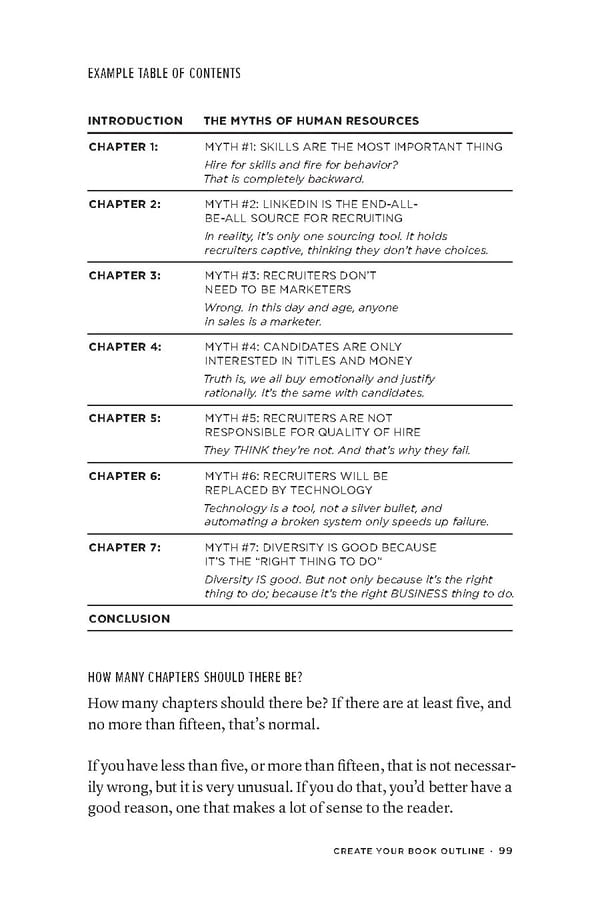EXAMPLE TABLE OF CONTENTS INTRODUCTION THE MYTHS OF HUMAN RESOURCES CHAPTER 1: MYTH #1: SKILLS ARE THE MOST IMPORTANT THING Hire for skills and fire for behavior? That is completely backward. CHAPTER 2: MYTH #2: LINKEDIN IS THE END-ALL- BE-ALL SOURCE FOR RECRUITING In reality, it’s only one sourcing tool. It holds recruiters captive, thinking they don’t have choices. CHAPTER 3: MYTH #3: RECRUITERS DON’T NEED TO BE MARKETERS Wrong. In this day and age, anyone in sales is a marketer. CHAPTER 4: MYTH #4: CANDIDATES ARE ONLY INTERESTED IN TITLES AND MONEY Truth is, we all buy emotionally and justify rationally. It’s the same with candidates. CHAPTER 5: MYTH #5: RECRUITERS ARE NOT RESPONSIBLE FOR QUALITY OF HIRE They THINK they’re not. And that’s why they fail. CHAPTER 6: MYTH #6: RECRUITERS WILL BE REPLACED BY TECHNOLOGY Technology is a tool, not a silver bullet, and automating a broken system only speeds up failure. CHAPTER 7: MYTH #7: DIVERSITY IS GOOD BECAUSE IT’S THE “RIGHT THING TO DO” Diversity IS good. But not only because it’s the right thing to do; because it’s the right BUSINESS thing to do. CONCLUSION HOW MANY CHAPTERS SHOULD THERE BE? How many chapters should there be? If there are at least five, and no more than fifteen, that’s normal. If you have less than five, or more than fifteen, that is not necessar- ily wrong, but it is very unusual. If you do that, you’d better have a good reason, one that makes a lot of sense to the reader. CrEATE yOUr BOOk OUTliNE · 99
 The Scribe Method by Tucker Max Page 98 Page 100
The Scribe Method by Tucker Max Page 98 Page 100